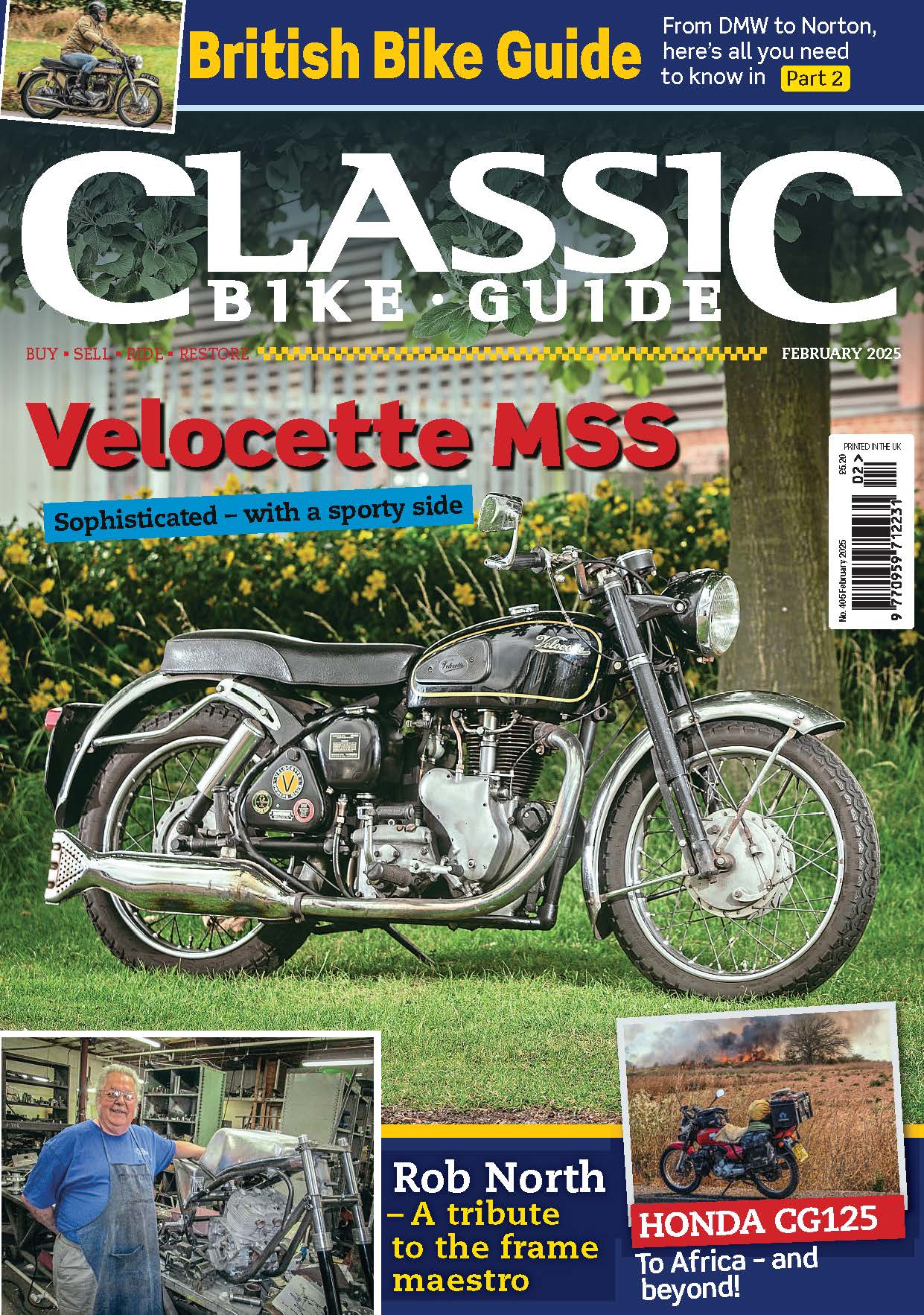American style, Italian build quality – the Aermacchi chapter of Harley-Davidson was an interesting one, laced with takeovers and mistakes, but leaving with us some great bikes.

Words by Oli Hulme Photos by James Archibald
In the 1960s, Harley-Davidson owned half of Aermacchi, Italian maker of small and medium-sized bikes. And Harley wanted a scaled-down Sportster to sell in the USA. This is what the Italians delivered: the Aermacchi Harley-Davidson Sprint 350SS, a blend of late-1960s American cool and Italian flair.
The look is pure Americana. The petrol tank apes Harley’s Sportster and originally would have come in striking shades – Radiant Blue, Midnight Black or Candy Orange, the same as the big Harleys of the day. There’s Harley-style matt black on the fittings and a tiny Sportster headlight. Hardly a touch of vibration from the 350cc single gets through the official Harley ‘Coke bottle’ handlebar grips, and there are H-D levers, switchgear and throttle. It is a single, but has two silencers for visual balance, and would originally have had polished cases and plentiful Harley-Davidson branded footrests and other rubber parts. But apart from that, the Aermacchi is European at heart. There is a Dell’Orto 27mm carb sitting at an angle to the cylinder head, running down into the almost horizontal cylinder, with a tall air filter sticking into a cavity in the bottom of the petrol tank. The ignition switch is from a Fiat 600 and the electrics are CEV and Bosch. The instruments are Veglia. There is almost nothing to the frame. One large tube forms a spine back from the steering head to just above the swingarm pivot and the engine hangs off it, so it’s easy to work on everything. The seat is mounted on the mudguard, which forms the rear subframe. It has a generator, a regulator, and a few wires, a QD back wheel, a very good 2LS (twin-leading shoe) front brake, and Aermacchi forks.
The Sprint’s engine is incredibly well-made. It is wet sump with a gear primary drive and has a long stroke with a hefty 9:1 compression, producing 25bhp at 7000rpm. A pushrod 350 single, it’s not full of clever stuff like a Ducati, but the quality of the engineering is top-notch. The mid-section of the crankcase feels unburstable. It has a gear primary drive, roller bearings all over the place, and a feel of solidity that you won’t come across outside precision machine tools.
The gearshift is on the right and is a one-up-three-down racing shift. The prop stand is also on the right and is little more than a spike, which takes a bit of getting used to. With the kick-start on the left, you start it standing by the left-hand side, kicking it with your right leg, and once it is running you just lean it over to the right to rest on the prop stand. Starting it is one of those ritual things.
Many owners complain that starting is a bind, even more so when the bike is hot. There are different recommended starting procedures, but one that works 90% of the time is to turn on the fuel, turn off the ignition, and open the choke on the Dell’Orto, kick it twice, close the choke, turn on the ignition, and it will fire second kick. The other 10% of the time, the rider will thrash away at it for ages, give up, pull the plug, clean off the fuel that’s fouled it, put it back in, do the choke/ignition thing again, and then it goes straight away and ticks over nicely. If it’s warm, it should go in a couple of kicks, but if it is very hot, you are best off stopping on a hill, just in case it needs bumping.
It handles like a dream. You can do a lot with it, from gentle pootling along all the way up to a little light scratching, if you are so inclined. Once you are on the open road, you just get it into third or fourth and the asphalt rolls away beneath you. The high-ish rubber-mounted ‘bars feel a tiny bit disconcerting at low speeds, but once you are moving properly the steering is light and effortless – which is as it should be on a bike with an incredibly low centre of gravity that only weighs just over 300lb. The dry clutch doesn’t like being ridden, but as it is a pretty heavy pull; such behaviour doesn’t suit the rider either. The gearchange is smooth and disturbingly un-Italian. You can even engage neutral at a standstill. Possibly, it is a little small for runs of hundreds of miles on modern roads, though, to be honest, I’ve toured on other bikes that are smaller. It is not a great deal of fun in heavy traffic, but what is? And my goodness, it’s a head-turner. A fabulous motorcycle, which is fine-lined and curvy, faster than a Brit 350, cooler than a Jap, and less troublesome than other Italians. It seems a shame it was never offered to British riders back in the day.
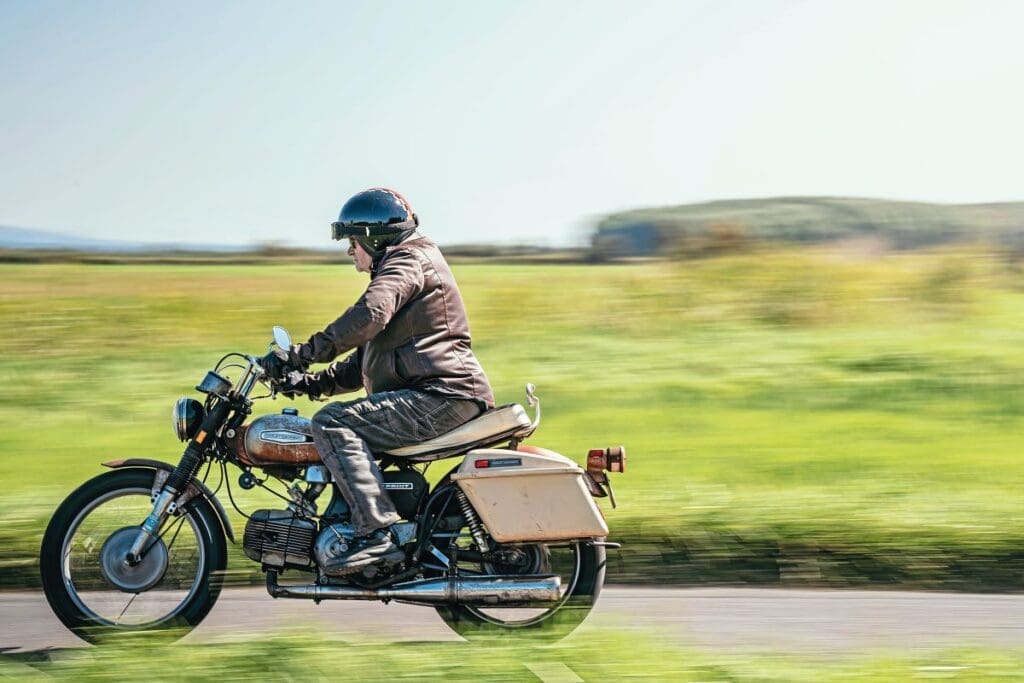
All the way from Varese, via New York State
In 1970, somebody walked into the Norwich Cycle Center in Norwich, New York State, and ordered this Aermacchi Sprint 350SS.
I know this because it still has the original dealer sticker on it from Norwich Cycle Center. It has the US tax sticker on the fork legs, showing it was last registered there in 1982, and the service ticket inside the toolbox.
It arrived in the UK in the spring of 2022, passed through three sets of hands, was registered by the DVLA, given new tyres, and then got to Mark Green, of Green Eye Motorcycles, who took it in part exchange for the lovely black 1979 Harley Sportster that graced the cover of this magazine in January.
Mark was going to keep it, but you can’t keep every motorcycle, and he advertised it for sale in April. I had to have it. It just looked so glorious. I sold my AJS Model 16 and gave the BSA Bantam Club its D7 back. I had space for it in my shed and the money to buy it.
While the three people whose hands it had been through before me had managed to coax it into life, and it had rolled a few yards under its own steam, it needed a moderate amount of work to get it properly useable again. This included work to the clutch, the carburettor and the charging system, much of which has been documented here in recent months, so I won’t bore you again with tales of the difficulty of finding parts and struggling with seized nuts… suffice to say that by mid-June, it was rolling – and it is an absolute delight. It was my regular ride all this summer.
There are some lovely pieces of design. For example: I had to take off the left-hand engine cover to get to the generator and did what I would normally do to get an engine cover off, starting by removing the kick-start. Then I found you could get the whole thing off by undoing five 6mm Allen screws and pulling the cover off, kick-start and kick-start mechanism still in place. No fiddling away under covers, getting fingers trapped while trying to locate springs and cables and catches. Just undo it, pull it off, and when you are done, bolt it back on. So long as you don’t have to delve into the centre of the crankcase, which requires a multitude of special tools and pullers, it is a breeze to work on. I decided to check the valve clearances, which are two thou. I just popped off the ‘ashtray’ cover, and there are the rockers, with the adjuster nuts nice and easy to get at.
The Harley seat is like a hammock, comfortable and forgiving. I don’t know why an Aermacchi with a set of bargain basement, 53-year-old oil-damped shocks should be so much more comfortable than my 2012 Moto Guzzi, but it is. It’s rapid, rather than fast. Apparently, it would happily top 90mph when new, which I don’t doubt for a minute. However, I tend to treat it gently; then it always feels as if it has got a lot more to give.
Whoever bought the bike back in 1970 ordered it with the pick of that year’s Harley accessory catalogue. There is the seat off a Sportster and a short sissy bar too, which I am told is now worth a king’s ransom to US collectors. There are a pair of Harley panniers, which are so useful I can’t believe that I’ve lived this long without them. They are mounted on a sturdy frame and are QD, as well. Just take off the lid, flip up two levers, pull outwards and upwards, and the whole plot pops off.
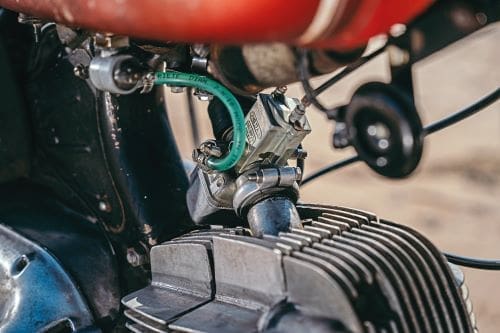
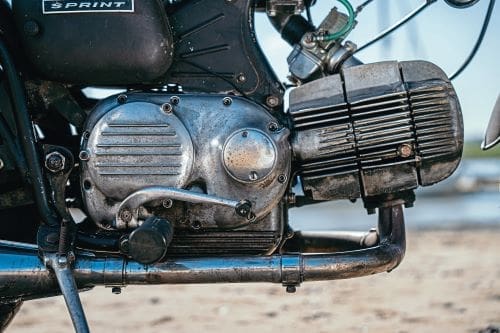
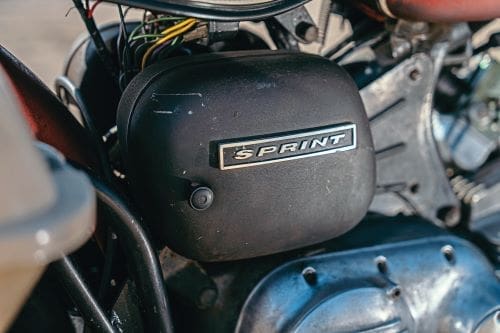
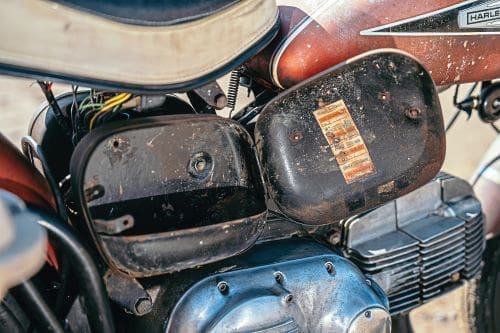
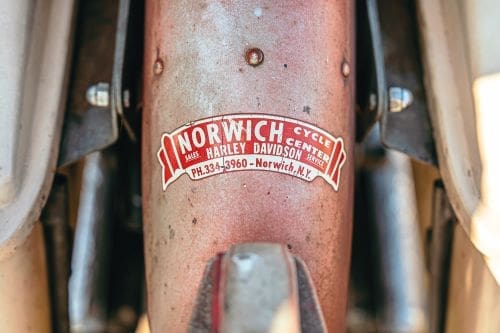

It came with a pair of curious brackets on top of the fork tops which, according to parts lists, were originally the indicator mounts for a 1963 Servicar trike, but on a 350SS were pressed into service as the mounting points for spotlights, now sadly missing. I expect I can find spotlights, and it could do with something to light the way as the tiny 6v sealed beam headlight merely glows rather than illuminates. It does appear that it might have had a screen, too, but I doubt there’s one of those out there.
What’s wrong with it? Well, you can’t get spares easily, and there’s a hole in the right-hand downpipe. The rear light lens has faded so much that the light at the rear is white and you can’t get replacement lenses, so I’ve swapped the bulb for one of Mr Goff’s (norbsa02.freeuk.com) red LED offerings. The rear sprocket is knackered. Fellow CBG writer Steve Cooper has warned me they have a tendency to lose the lids off the panniers, but I have a plan to deal with that. I can’t find a replacement rev counter cable and in any case, I have no idea if the drive works.
It’s unconscionable that the fabulous, weathered patina it should be touched. It is perfect. But it’s a great motorcycle. Solid, reliable, fine-handling, and to borrow a phrase from the writer Douglas Adams, it is “so cool you could keep a side of beef in it for a week.”
I’ve called it Frank, after Mr Sinatra, another effortlessly cool, slightly undersized Italian-American from New York… 1970 was a very good year.
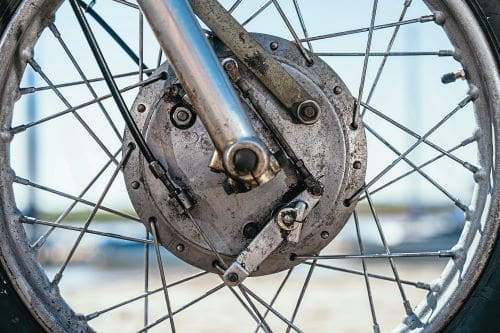
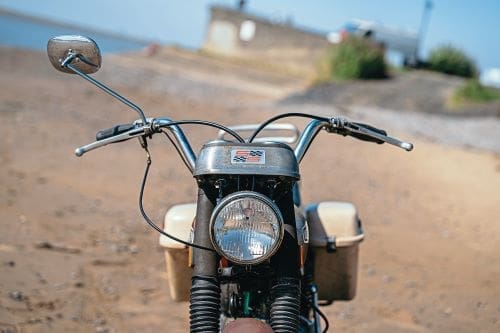
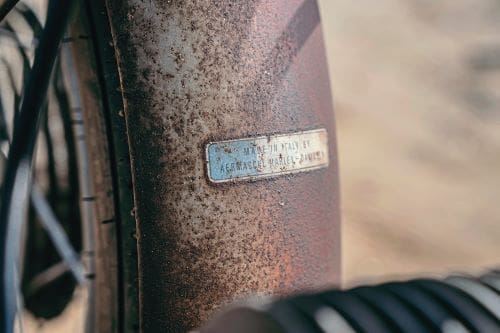
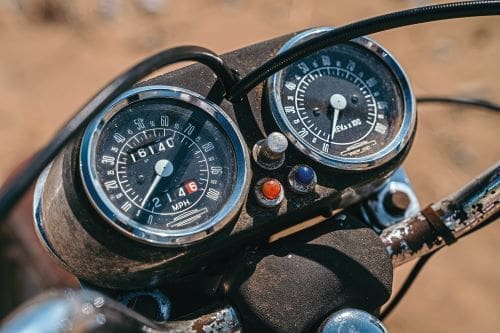
A bit of history – Harley’s Italian job
In the late 1950s, with bike sales booming in the USA, the last-remaining domestic big player, Harley-Davidson, decided it needed small capacity bikes to sell alongside its mighty V-twins, and Willie G Davidson travelled to Europe to find them. Rejecting a British tie-in as UK factories were already firmly established in the USA, Wille G looked first at German partnerships, and then went to Italy where he first considered buying stakes in Ducati, Parilla, Benelli and Gilera. All of these were rejected as they either had US importers already or were making bikes under licence for other companies, including Wards Riverside, the motorcycle division of the huge retail giant Montgomery Ward, which was badging Motobecane, Benelli, Bianchi and Lambretta machines, and rival retail behemoth Sears, which sold Puch, Vespa and Gilera bikes as Sears Allstate.
After rejecting Moto Guzzi, feeling that the bikes it made were too old-fashioned, in 1960 he decided that Harley-Davidson should pay just under $250,000 for a half-share in the Aermacchi company, based in Varese, northern Italy, which wanted to concentrate on its aviation division. The Americans didn’t go at this at half-throttle and spent a lot more money developing the range for the US and for the European market. There was never an official Aermacchi UK importer into the UK, but Aermacchis were imported into the UK on a small scale by Bill Webster, and later by racer Syd Lawton of Southampton, who sponsored an Aermacchi racer to second place in the Junior TT in 1970.
The first products of the partnership included Italian street racers for the Varese operation’s home market and some softer-styled cruisers and lightweights for the Americas.
Aermacchi bikes had Harley-Davidson branding added to their tanks but came with very different options for the US market, where Harley-Davidson wanted its bikes slightly more restrained. It was a touring version of the 250cc model that the firm went for first, marketed as the Ala Bianco in Europe and rebadged as the Wisconsin across the Atlantic. Slowly, some Aermacchis got more US styling. By 1966 the Aermacchi name had vanished from the US market bikes, while the European models were still badged as Aermacchi Harley-Davidson.
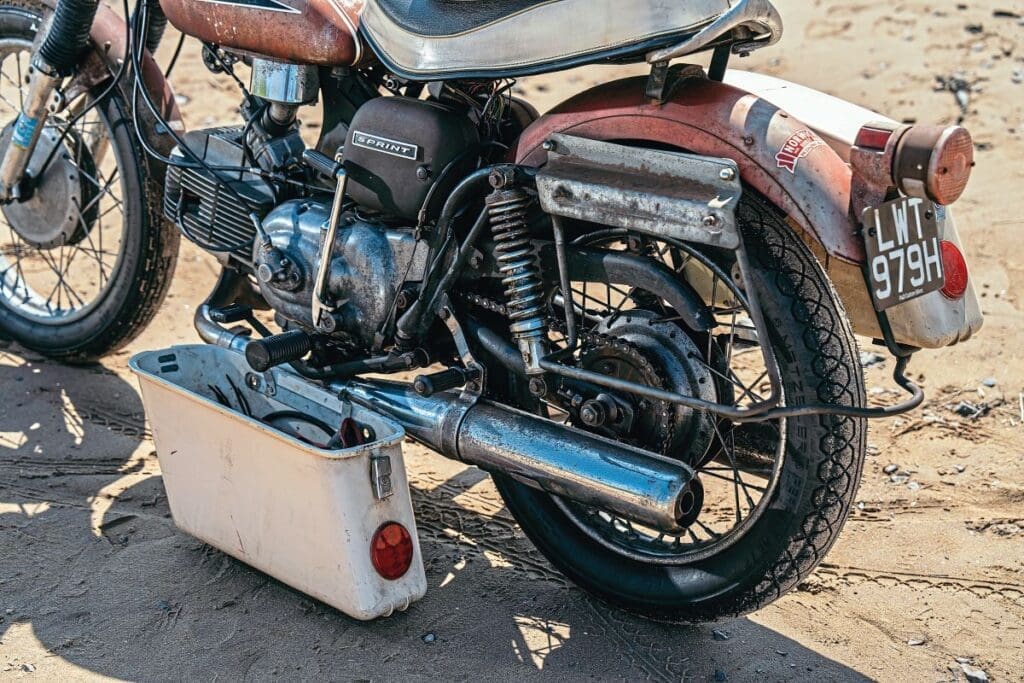
The Wisconsin proved popular in street scrambler trim too, badged as the Sprint H, and they were joined and then replaced in the US by a new 350, which used the now disparagingly described ‘ashtray’ finned rocker box. This was sold in 350GTS or 350 Sprint touring versions – the GTS had touring bars and a large, high, tank, while the Sprint had a more American-styled tank and high ‘bars, fashioned after the big Harley tourers.
Then, in 1972, AMF (American Machine and Foundry) bought Harley-Davidson and immediately acquired the other half of Aermacchi too.
The 350 four-stroke and a range of smaller two-stroke singles continued in development. The Italian brand name was dropped globally, and all the Varese offerings were now badged as AMF Harley-Davidsons.
The 350 got a fifth gear and then lost the ‘ashtray’ rocker box, regaining the lumpy and more attractive original, and this came as the 30bhp, 100mph 350TV in 1971. A larger 30mm Dell‘Orto carb was fitted and with a dry weight of only 135kg, clip-ons and race tuning, the TV was Aermacchi’s fastest road-going single. The TV was sold until mid-1972.
Meanwhile, there was a new version of the Sprint SS with the fifth gear, and the gearshift was moved to the left to comply with US law. There was new cradle type frame too, new alternator-powered 12-volt electrics, and a troublesome electric start, all added in an attempt to make it compete with more modern offerings. But by this point, the end of the road was approaching for the flat single. The incredibly sturdy engine was horribly expensive to make, and the new, cheaper two-strokes were more market-friendly.
AMF concentrated on developing the range of two-strokes, which now ranged from 90cc to 350cc. AMF launched them officially in the UK, if a little half-heartedly. While Harley’s big twins were given shiny new premises, the two-strokes were stacked alongside AMF’s other products, including bowling alley machinery and pinball machines, in a warehouse on the outskirts of London.
As the cost savings were made, the build quality of the Harley two-strokes slipped. In the UK, they suffered in our weather conditions.
The four-stroke single was officially dropped in 1975, but AMF persevered with the two-strokes, marketing them aggressively alongside its big twins.
During the late 1970s, with the US economy in recession and Japanese bikes ruling the roost in the lightweight market, AMF shut the Italian operation in 1978, pulling the plug while the factory was on a summer shutdown.
The firm sold the factory and the rights to its bikes to Cagiva, a move that helped Cagiva become a major player.
A single updated four-stroke, using an old 350 four-stroke engine Cagiva found in the factory, was produced, but sadly it never went into production.
AMF eventually sold Harley-Davidson in 1982 to new US owners.
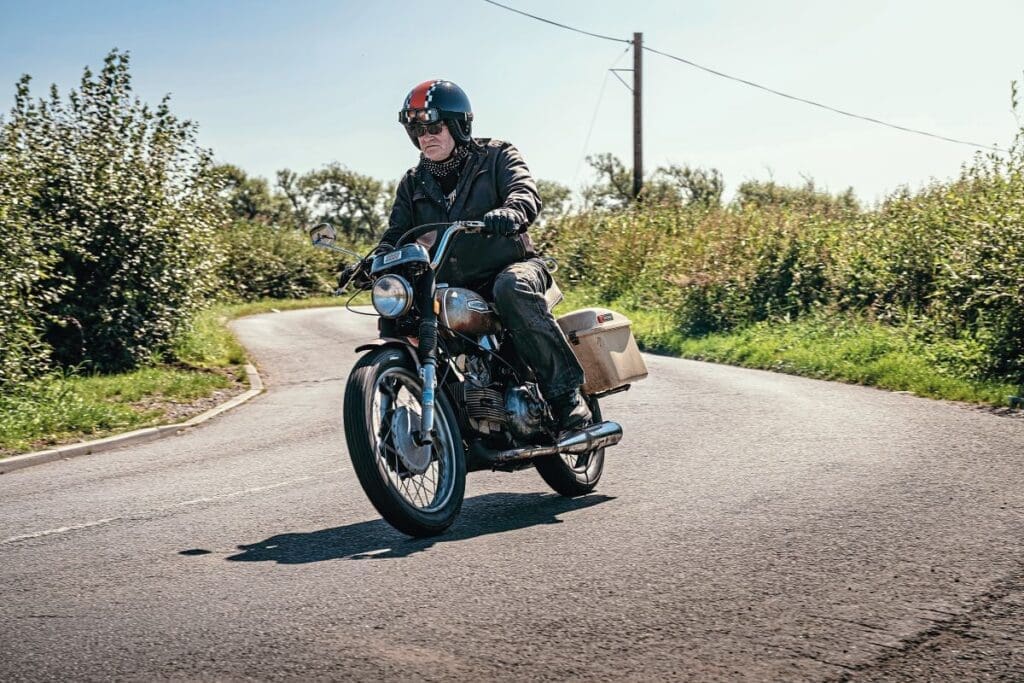
SPECIFICATION: 1970 350 Sprint SS
ENGINE: 350cc air-cooled OHV single-cylinder COMPRESSION RATIO: 9:1 POWER: 25bhp @ 7000rpm GEARBOX: Four-speed FINAL DRIVE: Chain FRAME: Steel-tubed spine SUSPENSION: Aermacchi telescopic forks, twin shocks at rear BRAKES: 7in twin leading shoe drum front and single leading shoe rear TYRES: 3.25×19 front 3.50×18 rear SEAT HEIGHT: 30in WHEELBASE: 54in GROUND CLEARANCE: 7in DRY WEIGHT: 323lb/146kg FUEL CAPACITY: 2.1 gallons/9.84 litres TOP SPEED: 90mph


